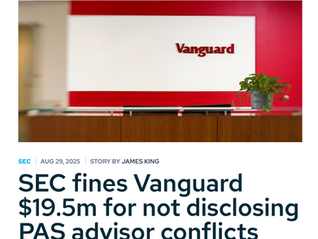- Rubin Miller, CFA

- Apr 8, 2023
- 3 min read

Fortunes & Frictions is intended as a genuinely authentic canvas. In addition to musings on topics like portfolio design and investor behavior, you've glimpsed my early life as a competitive chess player, my tenure at — and affinity for — Dimensional Fund Advisors (DFA), and my time as Chief Investment Officer (CIO) at Perspective Wealth Partners...not to mention the ocean-sized love for my small family, our IVF journey, my own personal finance mistakes, and even organizational challenges with my refrigerator.
In this spirit, I'm excited to share a professional update with you.

I'm now the Founder & Chief Investment Officer of Peltoma Capital Partners, a boutique independent advisory firm serving investment, financial planning, and tax needs.
Nothing about Fortunes & Frictions will change. Now with readers in over 125 countries, the reach and potential impact has evolved, but the goal is still simply to tell stories that empower people to have better investment experiences. That these stories might inform the way you think about your family's financial life, or help contextualize your portfolio decision-making, is a privilege I take seriously.
While I will briefly describe the new firm here, the blog will continue to not be a platform to pitch advisory services. As readers, you can expect that information about Peltoma will be limited to this update (for information about working with me, I welcome you to reach out directly or visit Peltoma's website).
Ease, Comfort, and Time
The firm's name honors my favorite story about life and wealth (readers may recall I wrote about it last July when Olive was born). Peltoma is a lake and region in Nova Scotia where the Mi'kmaq tribe still live. In 1608, as the wealthy and "enlightened" French washed ashore in Canada with their fancy clothes and jewels, Father Pierre Biard was assigned to evangelize the Mi'kmaq, who lived simply and appreciated life's basic pleasures.
The Mi'kmaq shunned careless materialism and were acutely aware of its thorns. Their timeless comments to these fancy Frenchmen are recited in the The Dawn of Everything:
You are always fighting and quarrelling among yourselves; we live peaceably. You are envious and are all the time slandering each other; you are thieves and deceivers; you are covetous, and are neither generous nor kind; as for us, if we have a morsel of bread we share it with our neighbor.
What seemed to irritate Biard the most was the Mi'kmaq would constantly assert that they were, as a result, 'richer' than the French.
The French had more material possessions, the Mi'kmaq conceded; but they had other, greater assets: ease, comfort, and time.
People and families with whom this idea resonates, who are interested not just in prudently growing their assets but in finding purposeful ways to leverage them into deeper levels of happiness for themselves, and for the people, communities, and causes they love, will find a natural home at Peltoma.
I'd like to also introduce you to Peltoma's Advisory Board, who bring an array of talents to help us design a deeply intentional, service and mission-oriented financial advisory practice to serve generations of diverse families.
In assembling this group, Peltoma taps into thought leadership from other industries — who approach client service with fresh palates and varying perspectives, without the sludge of legacy systems, and who are less familiar with the way it's always been done.
These are all great qualities to build a thoughtful, modern, and client-centric business.

I wish all readers a fantastic investment experience — and that your current or future financial wealth be a tool to provide you, in the vision of the Mi'kmaq, even greater assets.
And that's it. Back to basics next time (pigeons, farmers, Bo Jackson, etc...). Thanks for letting me share the big news with you.









